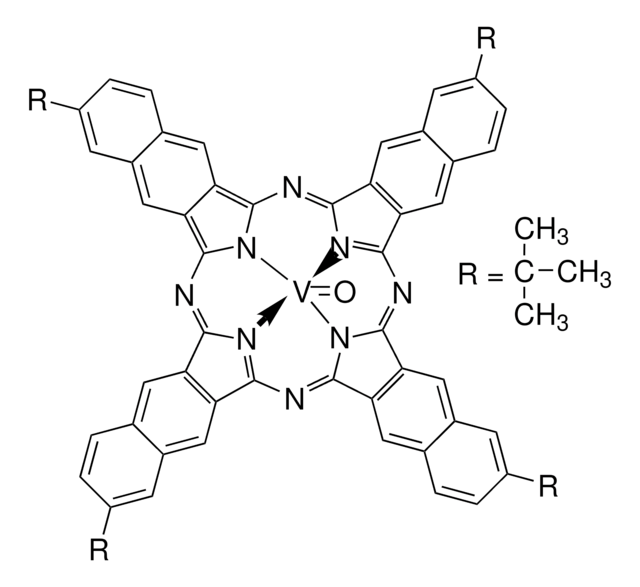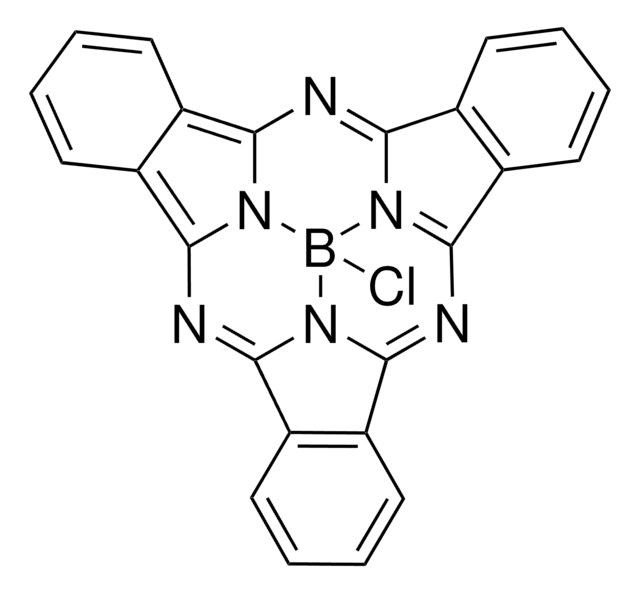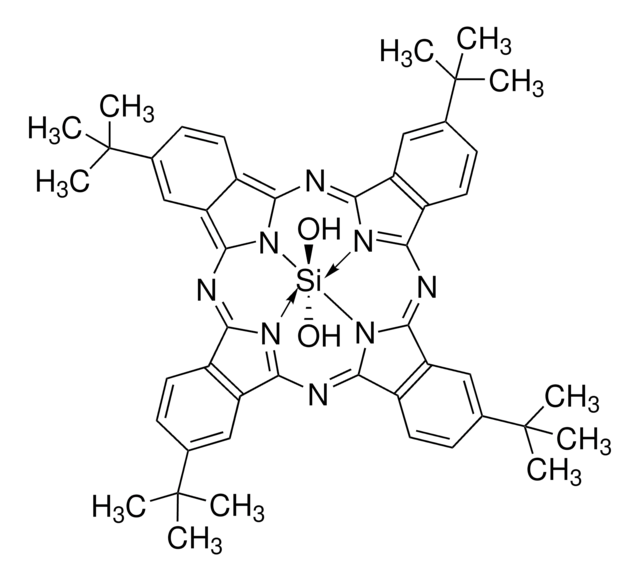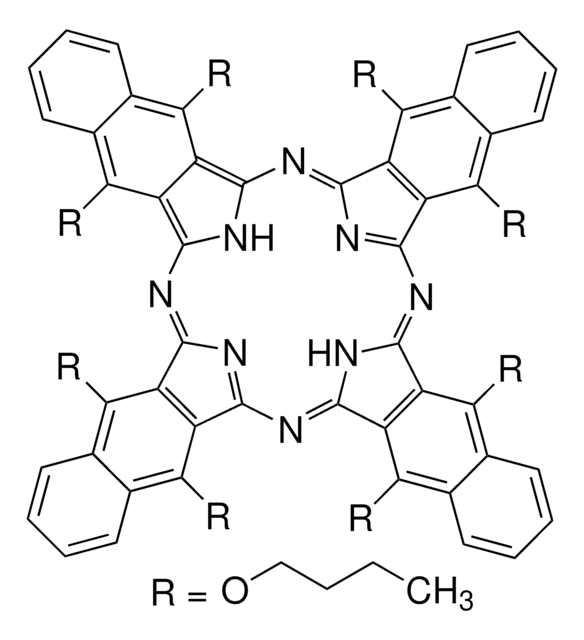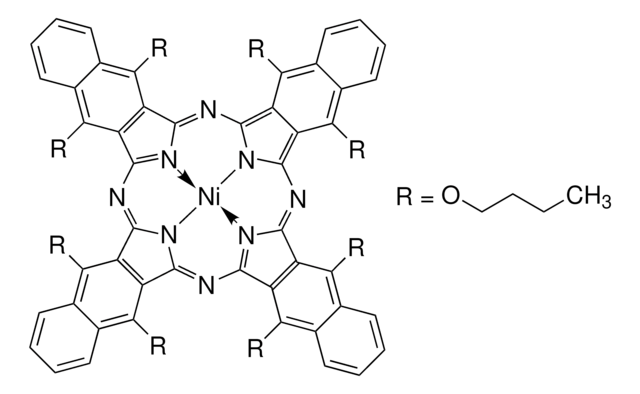389935
Silicon 2,3-naphthalocyanine bis(trihexylsilyloxide)
Dye content 95 %
Synonym(s):
2,3-Naphthalocyaninato-bis(trihexylsiloxy)silane, Bis(trihexylsiloxy)silicon 2,3-naphthalocyanine
About This Item
Recommended Products
composition
Dye content, 95%
mp
270 °C (dec.) (lit.)
λmax
729 nm
774 nm (2nd)
SMILES string
CCCCCC[Si](CCCCCC)(CCCCCC)O[Si]1(O[Si](CCCCCC)(CCCCCC)CCCCCC)n2c3nc4nc(nc5n1c(nc6nc(nc2c7cc8ccccc8cc37)c9cc%10ccccc%10cc69)c%11cc%12ccccc%12cc5%11)c%13cc%14ccccc%14cc4%13
InChI
1S/C84H102N8O2Si3/c1-7-13-19-33-47-95(48-34-20-14-8-2,49-35-21-15-9-3)93-97(94-96(50-36-22-16-10-4,51-37-23-17-11-5)52-38-24-18-12-6)91-81-73-57-65-43-29-30-44-66(65)58-74(73)83(91)89-79-71-55-63-41-27-28-42-64(63)56-72(71)80(86-79)90-84-76-60-68-46-32-31-45-67(68)59-75(76)82(92(84)97)88-78-70-54-62-40-26-25-39-61(62)53-69(70)77(85-78)87-81/h25-32,39-46,53-60H,7-24,33-38,47-52H2,1-6H3/b87-77-,87-81-,88-78-,88-82-,89-79-,89-83-,90-80-,90-84-
InChI key
UHZAFCVNWQGRLM-RXJYMHMBSA-N
Storage Class Code
11 - Combustible Solids
WGK
WGK 3
Flash Point(F)
Not applicable
Flash Point(C)
Not applicable
Personal Protective Equipment
Choose from one of the most recent versions:
Already Own This Product?
Find documentation for the products that you have recently purchased in the Document Library.
Our team of scientists has experience in all areas of research including Life Science, Material Science, Chemical Synthesis, Chromatography, Analytical and many others.
Contact Technical Service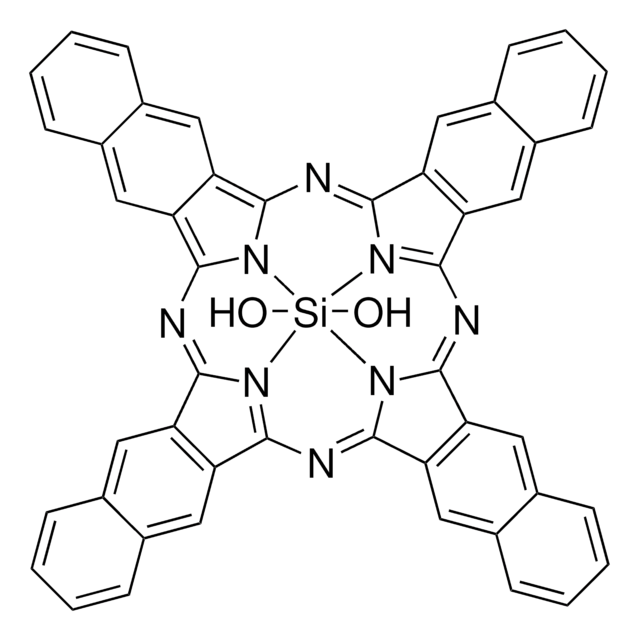

![Poly[2-methoxy-5-(2-ethylhexyloxy)-1,4-phenylenevinylene] average Mn 40,000-70,000](/deepweb/assets/sigmaaldrich/product/structures/344/488/b8f8179d-3970-4deb-a754-adda88cdb36f/640/b8f8179d-3970-4deb-a754-adda88cdb36f.png)
![1,3-Dihydro-1,3,3-trimethylspiro[2H-indole-2,3′-[3H]naphth[2,1-b][1,4]oxazine] ≥98.0% (HPLC)](/deepweb/assets/sigmaaldrich/product/structures/328/450/b7868d16-ffb3-47c0-8c9b-81a9630a963a/640/b7868d16-ffb3-47c0-8c9b-81a9630a963a.png)
